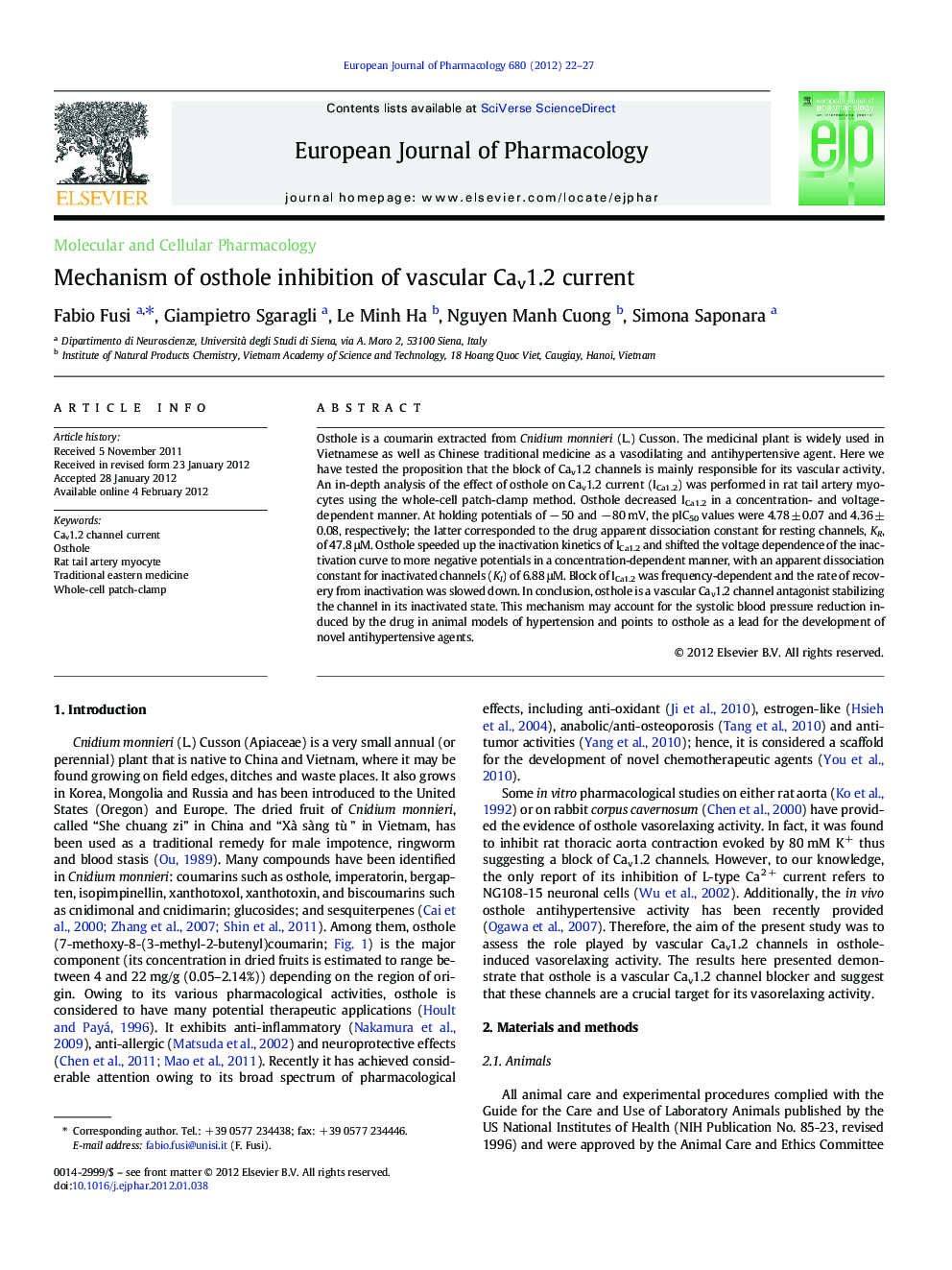| Article ID | Journal | Published Year | Pages | File Type |
|---|---|---|---|---|
| 5829729 | European Journal of Pharmacology | 2012 | 6 Pages |
Abstract
Osthole is a coumarin extracted from Cnidium monnieri (L.) Cusson. The medicinal plant is widely used in Vietnamese as well as Chinese traditional medicine as a vasodilating and antihypertensive agent. Here we have tested the proposition that the block of Cav1.2 channels is mainly responsible for its vascular activity. An in-depth analysis of the effect of osthole on Cav1.2 current (ICa1.2) was performed in rat tail artery myocytes using the whole-cell patch-clamp method. Osthole decreased ICa1.2 in a concentration- and voltage-dependent manner. At holding potentials of â 50 and â 80 mV, the pIC50 values were 4.78 ± 0.07 and 4.36 ± 0.08, respectively; the latter corresponded to the drug apparent dissociation constant for resting channels, KR, of 47.8 μM. Osthole speeded up the inactivation kinetics of ICa1.2 and shifted the voltage dependence of the inactivation curve to more negative potentials in a concentration-dependent manner, with an apparent dissociation constant for inactivated channels (KI) of 6.88 μM. Block of ICa1.2 was frequency-dependent and the rate of recovery from inactivation was slowed down. In conclusion, osthole is a vascular Cav1.2 channel antagonist stabilizing the channel in its inactivated state. This mechanism may account for the systolic blood pressure reduction induced by the drug in animal models of hypertension and points to osthole as a lead for the development of novel antihypertensive agents.
Keywords
Related Topics
Life Sciences
Neuroscience
Cellular and Molecular Neuroscience
Authors
Fabio Fusi, Giampietro Sgaragli, Le Minh Ha, Nguyen Manh Cuong, Simona Saponara,
